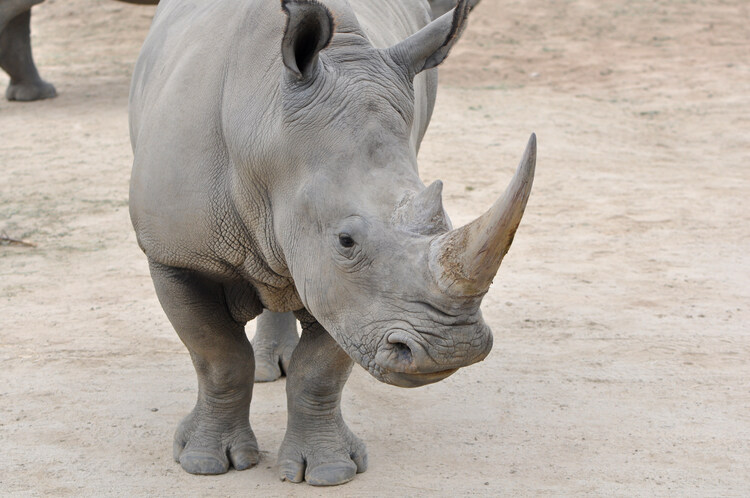
Could a highly experimental IVF technique bring the northern white rhino back from the very brink of extinction?
By
On the golden savannah plains of the Ol Pejeta Conservancy in central Kenya live two rhinos called Najin and Fatu. Whatever way you look at it, these are two very special rhinos. And that’s because they are northern white rhinos, and they are the last two living examples of this white rhino subspecies (the other is the much more numerous southern white rhino) left alive on the planet. And they are both female. Once they are gone, the northern white rhino will be officially extinct (they are already classed as functionally extinct). Or will they?
After years of experimenting a team of scientists from the Biorescue project has achieved the world’s first IVF rhino pregnancy by transferring a laboratory-created southern white rhino embryo into a surrogate southern white rhino mother. Although the surrogate mother used in the experiment died 70 days into the pregnancy after becoming infected with Clostridia bacteria (which is found in soil and can prove deadly to grazing animals such as the white rhino), when a post-mortem was carried out, it was discovered that the foetus was well developed and would have had a very high chance of survival.
This has been enough of a success to mean that the team are now confident that by using the same technique, they could have better luck with the northern white rhino. But, other problems remain. Neither of the living northern white rhinos, who are mother and daughter, are actually able to have babies. At 33 years of age, Nanjing is now too old to give birth, while Fatu suffers from health complications that mean that she, too, cannot produce a baby.
In order to get around this problem, the scientists intend to implant the embryo into the womb of a surrogate southern white rhino. Even though IVF has never been tried across subspecies before, northern and southern white rhino are so closely related that the team are confident that this might be successful.
However, there are other issues to contend with. The first is that the team will only have a limited number of attempts because only 30 northern white rhino embryos exist. These were created from eggs harvested from Fatu and sperm collected from two different male northern white rhinos before they died (Sudan, the last male, died in 2018).
The other problem to be overcome is that because they only have the eggs of one female and the sperm from two males, there will never be enough genetic diversity to create a viable, healthy population. To get around this, the team are working on a technique to create rhino eggs and sperm from stem cells, which would then be used to create embryos with more genetic diversity.
Another final problem is that it is important that any young rhino born is able to learn how to live from Nanjin and Feta rather than an unrelated rhino. This means that time is of the essence, and so the team hope to start implanting embryos into surrogate mothers in the next few months.
There are lots of hurdles left to cross, and even if everything does go according to plan, then it will still be many years until there is an even vaguely viable northern white rhino population, but for now, there is a tiny glimmer of hope that we might not be saying goodbye to the northern white rhino quite yet.
Related articles:



